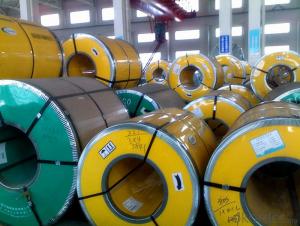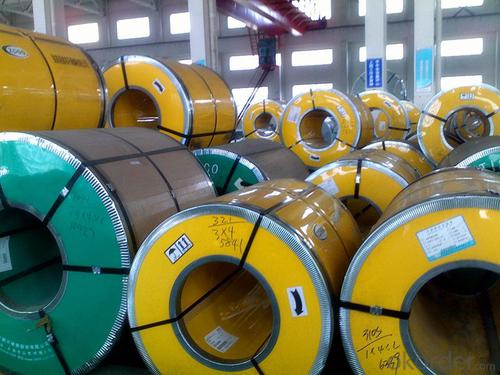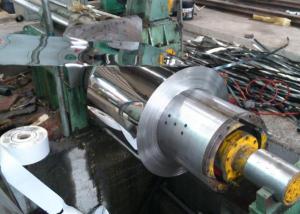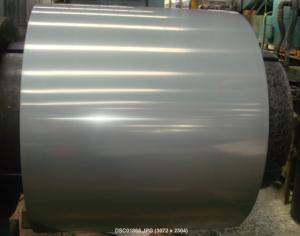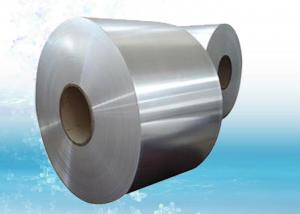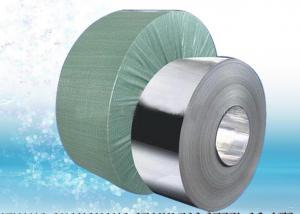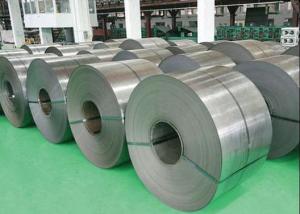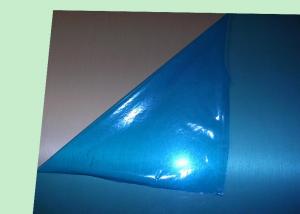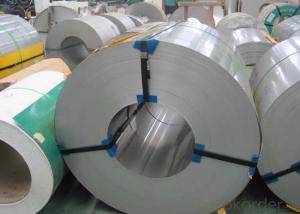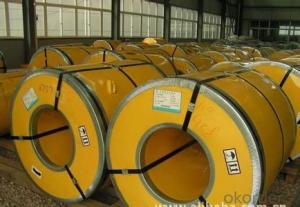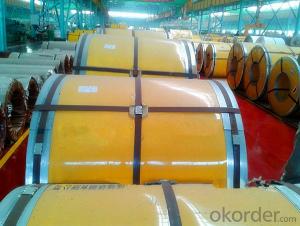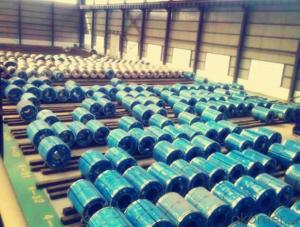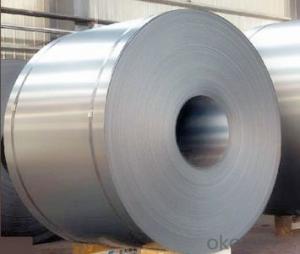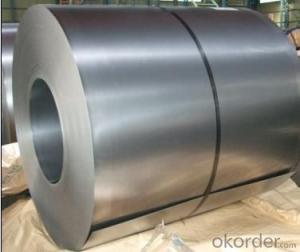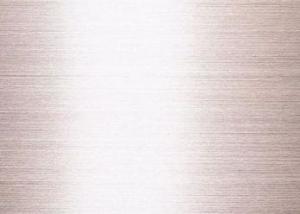Cold Rolled Stainless Steel Coil 304 2B Wide Strip
OKorder Service Pledge
OKorder Financial Service
You Might Also Like
Cold Rolled Stainless Steel Coil 304 Grade Wide Strip 2B Finish
Packaging Detail:standard export packing or as customer's requirements
Delivery Detail:7-15 days after the order
MOQ: 100mt
Standard: | AISI,ASTM,BS,DIN,GB,JIS | Grade: | 304 | Thickness: | 0.3-3.0mm |
Place of Origin: | China Mainland | Brand Name: | CNBM | Model Number: | 304 |
Type: | Steel Coil | Technique: | Cold Rolled | Surface Treatment: | 2B |
Application: | Medical instruments, building, chemical food industry agriculture | Width: | 500-2000mm | Length: | Coil |
finish: | 2B | item: | 304 cold rolled stainless steel coil | density: | 7.93 |
Chemical composition: |
| ||||||
C | Si | Mn | Cr | Ni | S | P | |
≤0.07 | ≤1.0 | ≤2.0 | 18.0~20.0 | 8.0~11.0 | ≤0.03 | ≤0.035 | |
mechanical properties: |
| ||||||
Tensile strength σb (MPa) | Conditions yield strength 0.2 sigma (MPa) | Elongation δ5 (%) | Section shrinkage (%) | Hardness | |||
520 | 205 | 40 | 60 | ≤1 | |||
- Q: Are stainless steel strips suitable for marine applications?
- Yes, stainless steel strips are suitable for marine applications. Stainless steel is highly resistant to corrosion, making it ideal for use in marine environments where exposure to saltwater and moisture is common. It offers excellent durability, strength, and long-term performance, making it a popular choice for various marine applications such as boat fittings, marine hardware, and offshore structures.
- Q: Can stainless steel strips be used in food processing applications?
- Yes, stainless steel strips can be used in food processing applications. Stainless steel is an ideal material for the food industry due to its superior corrosion resistance, durability, and hygiene properties. It is resistant to rust, staining, and chemical reactions, making it suitable for contact with various food products. Stainless steel strips are commonly used in food processing equipment such as conveyors, mixers, tanks, and cutting tools. Additionally, stainless steel is easy to clean and maintain, ensuring the highest standards of food safety and preventing contamination.
- Q: Are stainless steel strips resistant to scaling at high temperatures?
- Yes, stainless steel strips are resistant to scaling at high temperatures.
- Q: Can stainless steel strips be customized according to specific requirements?
- Yes, stainless steel strips can be customized according to specific requirements. The customization can include variations in dimensions, thickness, surface finish, and other specifications to meet the specific needs of different applications.
- Q: Can stainless steel strips be used in the production of HVAC ducts?
- Yes, stainless steel strips can be used in the production of HVAC ducts. Stainless steel is a durable and corrosion-resistant material, making it an ideal choice for HVAC ducts, which are exposed to various environmental conditions. Stainless steel strips can be easily formed and welded to create ducts that meet the necessary specifications and regulatory requirements for HVAC systems.
- Q: Can stainless steel strips be used in the production of aerospace components?
- Yes, stainless steel strips can be used in the production of aerospace components. Stainless steel offers excellent strength, corrosion resistance, and heat resistance properties, making it suitable for various aerospace applications. It is commonly used in the fabrication of aircraft structures, engine components, and other vital aerospace parts.
- Q: How do you clean stainless steel strips?
- To clean stainless steel strips, you can start by wiping them down with a soft cloth or sponge soaked in warm soapy water. For tougher stains or dirt buildup, you can use a non-abrasive cleaner specifically formulated for stainless steel. It's important to avoid using abrasive materials or harsh chemicals as they can damage the surface. After cleaning, make sure to rinse the strips thoroughly with water and dry them with a clean cloth to prevent water spots or streaks.
- Q: Are stainless steel strips suitable for architectural mesh applications?
- Yes, stainless steel strips are highly suitable for architectural mesh applications. They offer exceptional durability, corrosion resistance, and strength, making them ideal for creating intricate and visually appealing architectural mesh designs. Additionally, stainless steel strips provide excellent fire resistance, versatility, and ease of maintenance, making them a popular choice for various architectural projects such as facades, partitions, and sunshades.
- Q: What are the main properties of stainless steel strips?
- Some of the main properties of stainless steel strips include high corrosion resistance, strength, durability, and temperature resistance. It is also known for its aesthetic appeal, easy maintenance, and versatility in various applications.
- Q: Can 111 stainless steel strips be used in the pulp and paper industry?
- Yes, 111 stainless steel strips can be used in the pulp and paper industry. Stainless steel is widely used in this industry due to its corrosion resistance, high strength, and durability. It can be used for various applications, such as in the manufacturing of paper machines, screens, and other equipment that come into contact with corrosive chemicals and liquids used in the pulp and paper production process. The 111 grade stainless steel, also known as AISI 111 or S11100, is a low carbon variant that offers good weldability and resistance to intergranular corrosion. Therefore, it can be a suitable material choice for specific requirements in the pulp and paper industry. However, the specific application and conditions should be considered to ensure that the stainless steel strips meet the necessary mechanical and chemical properties for optimum performance.
Send your message to us
Cold Rolled Stainless Steel Coil 304 2B Wide Strip
OKorder Service Pledge
OKorder Financial Service
Similar products
Hot products
Hot Searches
Related keywords
